
Review on 8-Channel Multifunction Relay Board With Time Delay And Optocoupler LED - Ideal For Industrial Automation by Gary Generale

Excellent timer relay for multiple accessories on a train layout or other project.
I'm copying the posted instructions for the 4 channel variant another reviewed shared on that model.Instructions:To enter programming mode, push and hold "Set" for 2 seconds. Display shows F--0. To select between channels, use "+", or "-". When the correct channel is selected, push "Set". Display will show C--0, where C is the channel number 0.3. Use "+", "-" to select the parameter number 0.7, then "Set" to choose the parameter. Then press "+","-" to program the parameter value. See the table below for parameters and their ranges. To exit, press "SAVE". This saves the parameter and pops up one level in the menu. To exit, keep pressing "Save" until it exits through the F menu. At this time, the board will reset; same as power on reset.Long push "Set":>"+” Count up F--0, F--1, F--2, F--3 between the 4 independent channels."-" Count downShort push Set:> push to cycle through the parameters 0.7Parameter Mode Rangen--0 Function #N 0.19n--1 T1 hours 0.255n--2 T1 minutes 0.59n--3 T1 seconds 0.59n--4 T2 hours 0.255n--5 T2 minutes 0.59n--6 T2 seconds 0.59n--7 Count (NX) 0.9999The following description is with COM high. The trigger level of the corresponding channel input (X) signal is inverted if COM is low.Function 0: Power-on delay pull-in: After delaying T1 time from power-on, the relay pulls in, and at any time, a high-level pulse signal is sent to the X interface. This function is reset and restarts operation.Function 1: The power-on delay is disconnected: when the power is on, the relay pulls in, and after pulling T1 time, the relay is disconnected, and a high-level pulse signal is given to the X1 interface at any time. This function is reset and restarts operation.Function 2: Regular pull-in and then break-off: When the power is turned on, the relay is turned off. After the off-time T1 is reached, the relay pulls in. After the pull-in time T2 is reached, the relay is off. The X interface is given a high-level pulse signal at any time. Function reset and restart operation.Function 3: Timing off and then on: When the power is on, the relay pulls in. When the pull-in time T1 arrives, the relay turns off. When the off-time T2 arrives, the relay pulls in. At any time, it gives the X interface a high-level pulse signal. Function reset and restart operation.Function 4: Infinite loop mode 1: When the power is turned on, the relay is turned off. After the off time T1 arrives, the relay pulls in. After the pull-in time T2 is reached, the relay is off, and then the above state is repeated. The X interface is high at any time. Pulse signal, this function resets and restarts operation.Function 5: Infinite loop mode 2: When the power is turned on, the relay immediately pulls in. After the pickup time T1 arrives, the relay turns off. After the off time T2 arrives, the relay pulls in and then repeats the above state. Any time, the X interface is high. Flat pulse signal, this function resets and restarts operation.Function 6: Limited Cycle Mode 1: When the power is turned on, the relay opens. After the off time T1 arrives, the relay pulls in. After the pull-in time T2 arrives, the relay turns off, and then repeats the action more than NX times. The cycle number NX is in the range of 1 - 9999. Adjustable between times, any time to a high level pulse signal to the X interface, this function reset and restart the operation.Function 7: Limited Cycle Mode 2: When the power is on, the relay pulls in and the relay turns off after the pull-in time T1 arrives; the relay pulls up after the turn-off time T2 arrives, and then repeats the action more than NX times. The cycle number NX is in the range of 1-9999. Adjustable between times, any time to a high level pulse signal to the X interface, this function reset and restart the operation.Function 8: Self-locking relay mode: A high-level pulse signal is sent to the relay X interface, the relay pulls in, and then a high-level pulse signal relay is turned off.Function 9: Level-triggered relay mode (including delay disconnection function): When the power is turned on, the relay is disconnected, and a high-level signal is sent to the X interface, and the relay immediately pulls in. After the X port signal disappears, the relay still pulls in. After the pull-in time T1 is reached, the relay opens. Note: In this function, if T1 is set to 0 seconds, it will become: X port has high level signal relay to pull in, and if there is no signal, it will be disconnected immediately.Function 10: After the trigger, the timer is closed: when the power is turned on, the relay is disconnected, and a high-level pulse signal is sent to the X interface. The time relay T1 is pulled and the X interface is repeated to a high level pulse signal, and the function is repeated more than once.Function 11: After the trigger, the timer is disconnected: when the power is turned on, the relay is disconnected, and a high-level pulse signal is sent to the X interface. The relay pulls in and the relay T1 is disconnected, and repeats the X interface with a high-level pulse signal. More than one function.Function 12: After the trigger, the timer is switched on and off again: when the power is turned on, the relay is disconnected, and a high level pulse signal is sent to the X interface. After the disconnection time T1 arrives, the relay pulls in; after the pickup time T2 is reached, the relay is disconnected and repeated. Give the X interface a high level pulse signal and repeat more than one function.Function 13: After the trigger, the timer is disconnected and then the pull-in is switched on: when the power is turned on, the relay is disconnected, and a high-level pulse signal is sent to the X interface. The relay pulls in. After the pull-in time T1 arrives, the relay is opened; after the cut-off time T2 arrives, the relay Suction, repeated to the X interface a high pulse signal, repeat more than one function.Function 14: Infinite loop after triggering mode 1: The relay is disconnected during power-on, and a high-level pulse signal is sent to the X interface. After the delay time T1 arrives, the relay pulls in; after the pull-in time T2 arrives, the relay is disconnected and then repeats The above action, repeated to the X interface a high pulse signal, you can restart the above function.Function 15: After the trigger, the infinite loop mode 2: The relay is disconnected when the power is turned on, and a high-level pulse signal is sent to the X interface. The relay pulls in, and the relay opens after the pull-in time T1 arrives; the relay pulls in after the cut-off time T2 arrives. , and then repeat the above action, repeated to the X interface a high pulse signal, you can restart the above function.Function 16: After triggering, the finite-cycle timing mode 1: When the power is turned on, the relay is disconnected, and a high-level pulse signal is sent to the X interface. After the off-time T1 arrives, the relay pulls in; after the pull-in time T2 arrives, the relay is off, and then Repeat the action more than NX times. The cycle number NX is adjustable between 1-9999 times. Repeatedly giving the X interface a high-level pulse signal can restart the above function.Function 17: After the triggering, the finite-cycle timing mode 2: When the power is turned on, the relay is disconnected, and a high-level pulse signal is sent to the X interface, the relay immediately pulls in, and the relay turns off after the pull-in time T1 arrives; the relay turns off after the time T2 arrives. Pull, then repeat NX more actions, the number of cycles NX adjustable between 1-9999 times, repeated to the X interface a high pulse signal, you can restart the above function.Function 18: Conditional cycle mode 1: When the power is turned on, the relay is disconnected and a high level signal is sent to the X interface. After the delay time T1 arrives, the relay pulls in; after the pull-in time T2 arrives, the relay turns off, as long as the X port is high. Does not disappear, the module will repeat the above action, if the X interface high signal disappears, the relay immediately disconnected, function reset.Function 19: Conditional cycle mode 2: When the power is turned off, the relay outputs a high-level signal to the X interface, and the relay pulls in. After the pull-in time T1 arrives, the relay turns off; when the off time T2 arrives, the relay pulls in, as long as X. If the high level of the port does not disappear, the module will repeat the above action. If the high signal of the X interface disappears, the relay is immediately disconnected and the function is reset.Note:1. The input signal detection interface can be either active-high or active-low. The user can select via COM port. If COM is connected to H, IN1-IN4 is active high, if COM is connected to L, IN1 -IN4 is active low!2. Trigger voltage (COM, IN1-IN4 port voltage): (Vendor Note) Do not exceed 5V at high level, and do not exceed 0.8V at low level. (User note) This does not seem the case in practice due to optical isolation with 1.3k ohm impedance is only 8mA at the LED with 12v input, which is easily in spec for the optical isolation circuit.3. Relay load output: 12-wire interface, all interfaces have terminal blocks
- HIGH PRECISION
- The board's large size and multiple inputs and outputs can make it bulky and difficult to incorporate into existing systems
New products
Comments (0)
Top products in 🕓 Timers
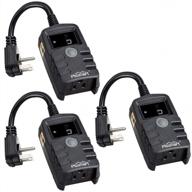
Plusmart Outdoor Digital Timer With Waterproof Light Sensor, Dusk To Dawn Control For Electrical Outlets (3 Pack + 6 Inch Extension Cord, 1/2HP)

30 Review
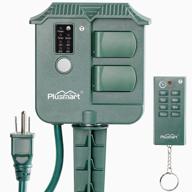
UL Listed Plusmart Outdoor Power Stake Timer With Wireless Remote Control, Photocell Light Sensor, 6Ft Extension Cord, Switch, And 3 Waterproof Grounded Outlets With Cover

29 Review

💡 Brinks 42-1076 Power Strip with Analog Timer - 8 Outlet

9 Review
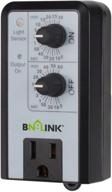
⏰ BN-LINK Short Period Repeat Cycle Intermittent Timer - Versatile 24 Hour Interval Timer for Day and Night Operations

9 Review
Another interesting products
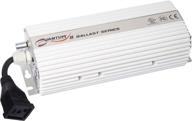
💡 Hydrofarm Quantum QT400 Dimmable Ballast for 400W Grow Lights

5 Review
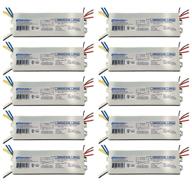
🔌 Robertson 2P20132 Quik-Pak: 10 Fluorescent eBallasts for 2 F40T12 Linear Lamps, Preheat Rapid Start, 120Vac, 50-60Hz, Normal Ballast Factor, NPF, Model RSW234T12120 /A (Crosses to RSW240T12120 /B)

4 Review
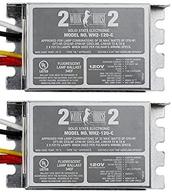
Fulham WorkHorse WH2-120-C Adaptable Ballast - 2 Pack

3 Review
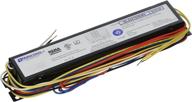
Robertson Worldwide ISL432T8HEMV AH 3P20160 120-277V 50-60Hz High Power Factor 4 F32T8 Linear Lamp Fluorescent eBallast

6 Review

